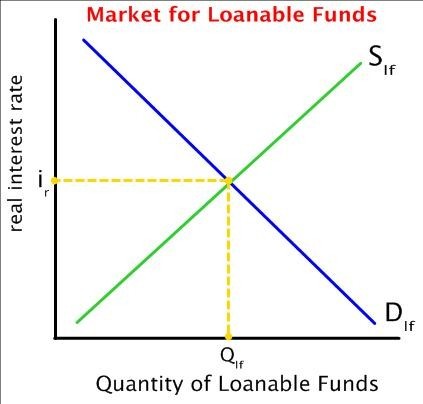Best Bond Funds for Rising Interest Rates
Post on: 12 Октябрь, 2015 No Comment

Bond Fund Types to Beat Interest Rates and Inflation
Learn which bond funds are best for rising interest rates and inflation. Getty Images
Which are the best bond mutual funds in a rising interest rate environment? Which bond funds do better against inflation? Knowing the basics on which funds perform best and which funds perform worst before and during higher interest rates and inflation is a crucial skill for the bond mutual fund investor .
The reasons why bonds are sensitive to interest rates and inflation are often made too complex and hence more difficult to understand. To simplify the main concepts you need to know for building the best portfolio of mutual funds. here are the main points:
- The Federal Reserve Board raises interest rates when it fears inflation will result from a growing economy. Conversely, they will lower interest rates to fight deflation and/or a slowing economy. This article is about the best bond funds for rising interest rates.
- These higher rates, called the Federal Funds Rate . charged to banks by the Federal Reserve increase costs of borrowing (the cost of money) for banks, which indirectly pushes them to pass on these costs to their customers, such as individual consumers, corporations and other banks. In different words, the interest charged on most loan types will increase after the Fed increases its rates.
- Bonds are essentially loans. If prevailing interest rates on loans, including bonds, are rising, bond investors tend to demand the higher yielding bonds to make more money on their bond investments.
- When bond investors are more attracted to the newer bonds that pay higher interest, the older bonds that paid lower interest become less attractive to investors. Why buy a bond that pays 6.00% when you can get a similar bond that pays 6.50%? Therefore, when bond investors want to sell their older bonds that pay lower interest rates, they are forced to sell the bond for a lower price than they bought it because the investor buying it will want a discount for accepting the lower interest rate.
In summary, bond prices move in opposite direction of interest rates because of the effect the new rates have on the old bonds. When interest rates are rising, new bond yields are higher and more attractive to investors while the old bonds with lower yields are less attractive, thereby forcing prices lower.
If all of this is still difficult to understand, don’t worry! You’re normal! All you really need to remember is that rising interest rates equals lower bond prices .
Example of How Rising Interest Rates Affect Bonds
Another key point to understand about the relationship between bond prices and interest rates is that bonds with longer maturities are more sensitive to interest rates than bonds with shorter maturities. For example, if interest rates are rising, who wants to own the bonds paying lower interest for even longer periods of time? The longer the maturity, the greater the interest rate risk .
A simple example here is with Certificates of Deposit (CDs). When the new CDs come out with higher yields, the CD investor wants to replace the old with the new. In addition, the savvy CD investor will buy CDs with shorter maturities (i.e. one year or less) if they expect rates to continue rising over the next year. Bond investing in a rising interest rate environment follows the same logic.
Best Bond Fund Types and Bond Funds For Rising Interest Rates and Inflation
Now that you know the basics on bonds and interest rates, here are some specific bond fund types that can do better than others in an environment of rising interest rates and inflation:
- Short-term Bonds: Rising interest rates make prices of bonds go down but the longer the maturity, the farther prices will fall. Therefore the opposite is true: bonds of shorter maturities will do better than those with longer maturities in a rising interest rate environment because their prices. However, keep in mind that doing better may still mean falling prices, although the decline is generally less severe. A few bond funds that work well include PIMCO Low Duration D (PLDDX) and Vanguard Short-term Bond Index (VBISX) .
- Intermediate-term Bonds: Although the maturities are longer with these funds, no investor really knows what interest rates and inflation will do. Therefore intermediate-term bond funds can provide a good middle-of-the-road option for investors that wisely choose not to predict what the bond market will do in the short-term. For example, even the best fund managers thought inflation (and lower bond prices) would return in 2011, which would bring on higher interest rates and make short-term bonds more attractive. They were wrong and fund managers lost to index funds. such as Vanguard Intermdiate-term Bond Index (VBIIX). which beat 99% of all other intermediate-term bond funds in 2011. Bond funds generally didn’t fall in price for a full calendar year until 2013. You can also try a more diversified approach with a total bond market index Exchange Traded Fund (ETF), such as iShares Barclay’s Aggregate Bond (AGG) .
- Inflation Protected Bonds : Also known as Treasury Inflation-Protected Securities (TIPS), these bond funds can do well just before and during inflationary environments, which often coincide with rising interest rates and growing economies. A standout fund for TIPS is Vanguard Inflation Protected Securites Fund (VIPSX) .
Advanced Tip: Investors willing to take more risk often turn to dividend mutual funds for income in low interest rate environments.
Disclaimer: The information on this site is provided for discussion purposes only, and should not be misconstrued as investment advice. Under no circumstances does this information represent a recommendation to buy or sell securities.














